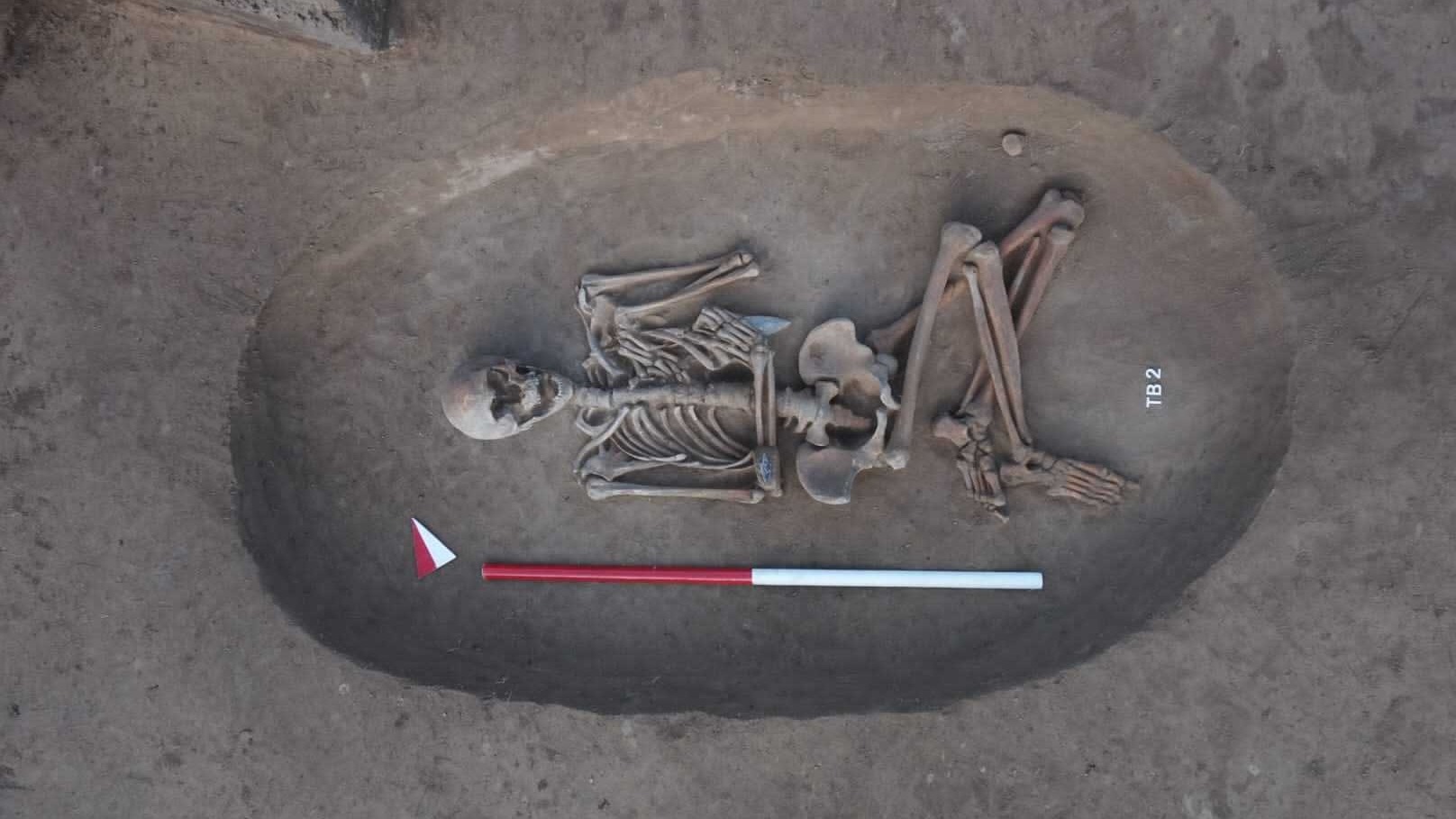Copper Age necropolis unearthed in Italy contains skeletal remains and still-sharp weapons, maybe from ancient warriors
The necropolis dates to the Copper Age and contains 22 tombs.

Archaeologists in Italy have unearthed a Copper Age necropolis that contains nearly two dozen tombs and a collection of weapons.
The discovery was made in November at San Giorgio Bigarello, a municipality in northern Italy, during the construction of a community garden. However, researchers had no idea how extensive the 5,000-year-old burial site was until excavations earlier this year revealed 22 tombs containing human remains. Many of the burials included flint weapons, including daggers, "perfect arrowheads" and blades, according to a translated article in ArchaeoReporter, an archaeology-focused newspaper based in Italy.
"Some of the tombs also had burial goods like necklaces made with soapstone beads," Simone Sestito, the archaeological officer at the Italian Ministry of Culture, told Live Science. "We found at least six or seven tombs with good preservation."
The cemetery's location on a sandy hill helped to preserve many of the skeletons because of the dry sand.
"The conditions were great for a necropolis, since the sand provided conservation of the bones," Sestito said. "The [preservation] was impressive, especially since the tombs were located only about 10 centimeters [4 inches] below the surface."
Related: Copper Age woman survived two skull surgeries up to 4,500 years ago
Archaeologists noticed that many of the skeletons were buried on their left sides "with legs bent to their chests and heads oriented to the northwest," according to ArchaeoReporter.
Sign up for the Live Science daily newsletter now
Get the world’s most fascinating discoveries delivered straight to your inbox.
"The positioning of the bodies suggests that there might have been some correlation with another Copper Age culture from northern Italy known as the Remedello," Sestito said. This is because members of that culture buried their deceased in a similar fashion, thus "leading to some parallels between the two societies."
While archaeologists don't know the identities of those interred at the site, the weapons buried with them suggest that many were warriors. These grave goods include "high-quality," sharp flint arrowheads that are "so light they are practically translucent — and can only have been crafted by people of great technical ability and experience," according to The History Blog.
Sestito said he and his team "have recovered all of the San Giorgio Bigarello site's burial goods and bones" and are working with researchers at the University of Bologna to analyze the DNA in the skeletons to learn more about who was buried there.
This isn't the first time archaeologists have discovered ancient human remains at San Giorgio Bigarello. In 2007, a different team of researchers found a pair of 6,000-year-old skeletons buried in an embrace, which led them to be called "the Lovers of Valdaro," according to The History Blog.
Jennifer Nalewicki is former Live Science staff writer and Salt Lake City-based journalist whose work has been featured in The New York Times, Smithsonian Magazine, Scientific American, Popular Mechanics and more. She covers several science topics from planet Earth to paleontology and archaeology to health and culture. Prior to freelancing, Jennifer held an Editor role at Time Inc. Jennifer has a bachelor's degree in Journalism from The University of Texas at Austin.









